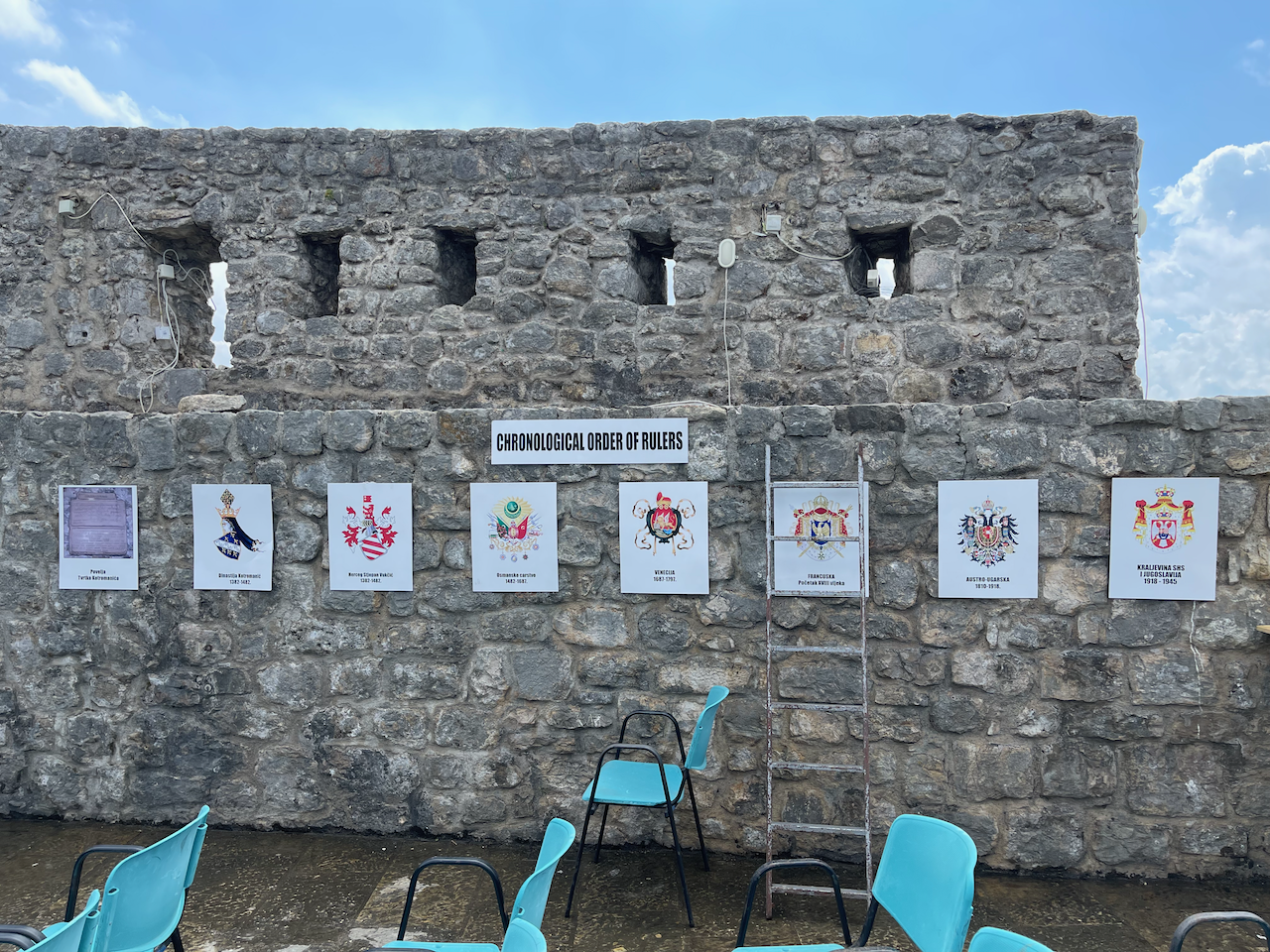In a visit to Montenegro last summer, my wife and I encountered the wall of a castle that listed some of the rulers of the country, which only became independent in 2006. This is a pretty boring way to convey history, and there were no other details but this wall.
Our tour guide had served in the navy of Yugoslavia and told us stories about that navy, and how he missed it. He later discussed life in Serbia and Montenegro, before discussing the current political situation in Montenegro today, making it clear he wasn’t in favor of independence from Serbia. So some of those past historical tensions were made vivid to us, in a way the wall couldn’t.
We were only in Montenegro for a day, and we didn’t see the signs of different kingdoms’ rule in Montenegro, though on a tour of a monastery there was some discussion of its use as a refuge during invasions by the Italians and Turks.
Not experiencing more of the history was just an accident of our tour, no doubt. However, in Greece, we saw layers of history in the landscape wherever we went: we saw ancient Greek monuments, Roman works, Venetian buildings, and British fortifications.
One of my custom GM moves is “Bring in backstories and world-building.” This isn’t always easy, but I try to make history come alive as more than just signs on a wall.
- For the two campaigns where we’ve used Microscope to collaboratively create the past, I regularly review the timeline we’ve built and try to bring in elements of it: an NPC from a faction mentioned in the history, discovery of an ancient artifact relating to the timeline, people gossiping at a lunar nightclub about revelations regarding one of the last timeline events, etc.
- In one of my Dungeon World campaigns, my PCs explored a lot of ruins and got a feel for the different layers of history. Cultural architecture styles were characteristic of different eras, which once led to the comment from our paladin, “I’m looking amongst the ruins for something built with drystack construction.” Yes, it sounds academic, but it led to a vital clue.
- For our Impulse Drive campaign, though, bringing in a player’s past history saved the entire campaign for him. The PCs had been seeking the secrets of the AI being used against them, and the Warhorse was shocked to learn it was the brain of his ancestor, the first Emperor. When the campaign ended, the Warhorse even gave me a star: “Great job pulling in our backgrounds. That was a literal game changer for me.”
Not that I always get it right. I once tried conveying the history of the empire in song, but that made as little connection with the players as that sequence of signs on the Montenegrin wall. Still, I encourage you to try to bring the world building to life in each session of your campaigns.
 You can download other essays in my free ebook, The Best-Delayed Plans.
You can download other essays in my free ebook, The Best-Delayed Plans.


